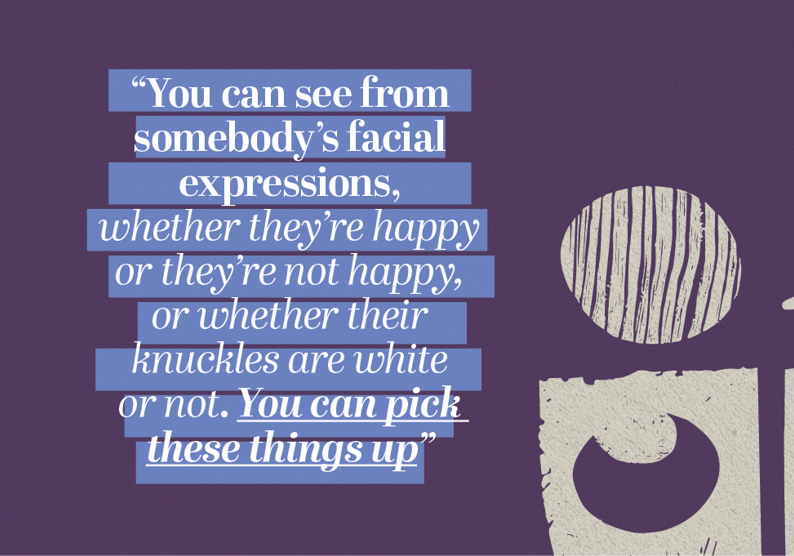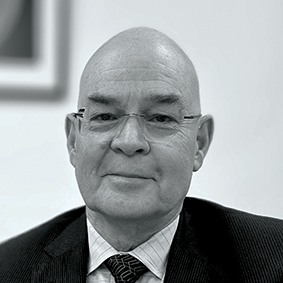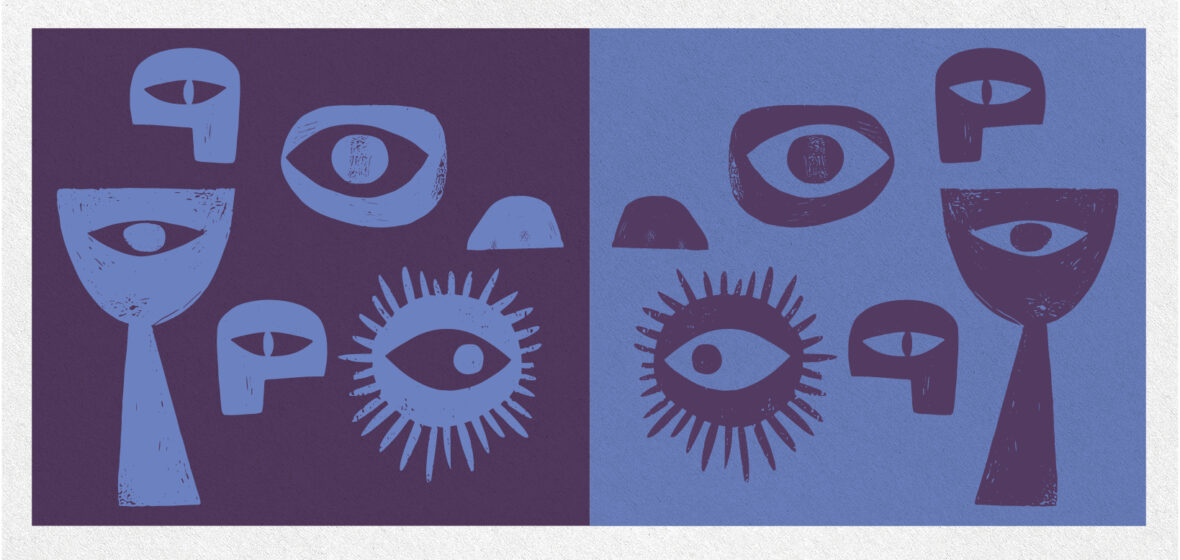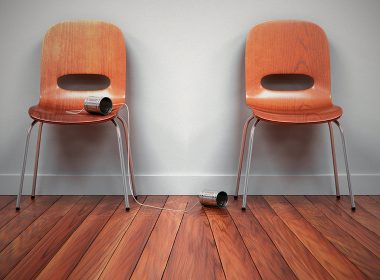“It avoids the executive time cost of actually being sucked into the vortex of litigation and I expect that any client who comes out of the other end of litigation, most would say, ‘I wish I was never involved’”
Mediation and other forms of Alternative Dispute Resolution are used to resolve everything from minor neighbourhood disagreements to large-scale commercial disputes. But are these methods being used to their full potential and do they offer a way of easing pressure on our overstretched court system?
In an episode of the ABC legal comedy Fisk, Roz Gruber, played by Julia Zemiro, enlists the help of her colleague Viktor to promote her business ‘Conch Mediation’ on social media. After wrapping up an Instagram post, they move onto TikTok. Roz isn’t sure if the platform is “on brand” but is persuaded to communicate her “corporate message”, through dance.
Closing her eyes and testing out some subtle moves to a tune presumably in her head, it suddenly comes to her. “Mediation, mediation, it’s all about conversation.” Enthused by her own spontaneous creativity and rhyming lyrics, Roz seems to be a convert. “That’s not bad. Something like that,” she says, without a skerrick of irony. “Something like that,” says Viktor, “let’s go again.”
Of course, mediation is serious business and is a key part of our legal system. It is one of a range of methods collectively known as Alternative Dispute Resolution (ADR). It’s also an area of renewed focus for the legal profession, with a number of key changes already underway and others under consideration. How ADR has evolved in recent years, its current state and where it is headed, are pertinent questions.
Individuals and entities seeking a just and true outcome according to the law, should have access to the courts, when they’re involved in a dispute. But the truth of this accessibility is more complex, and litigation can come with much excess baggage. This is where alternatives might come into play.
Mediation involves an independent third party, helping people in a dispute to identify the issues, develop options, consider alternatives and try to reach an agreement.
Other forms of ADR include conciliation, where the independent third party might have expertise in a particular area. They will provide advice about the issues and options but won’t make a decision about the dispute.
Expert determination is another method, whereby an independent third party with recognised expertise assists parties to find a resolution to their dispute.
This method might avoid the need for arbitration, which involves parties presenting arguments and evidence, where an arbitrator then makes a determination. It is a system that is governed by legislation, unlike expert determination.
What is ADR?
Gary Ulman is Chair of the ADR Committee at the Law Society of NSW and is a highly experienced lawyer and mediator. He’s also a former President of the Law Society.
“Anything other than going off to court and having a judge decide your fate, would be seen as an ADR process,” he tells the Journal.
According to the most recent provisional statistics published by the Supreme Court of NSW, there were 2,729 referrals to mediation in 2023 and 402 court-annexed mediations listed. Mediation referrals have been on an upward trajectory in recent years, up from 1,520 in 2020. The largest share of court-annexed mediations was in the court’s Succession and Probate List.
But Ulman believes there is scope for greater use of mediation and other types of dispute resolution, in a court system under the strain of so many matters. He says the cost of engaging in litigation is not just financial, making other methods sometimes more suitable.
“It avoids the executive time cost of actually being sucked into the vortex of litigation and I expect that any client who comes out of the other end of litigation, most would say ‘I wish I was never involved’”.
“It’s a process that is not only costly, but it is stressful, time-consuming, one to be avoided,” he says.
Mediation and technology
The COVID-19 pandemic was a stress test for most workplaces and the law was no different. But just as video conferencing enabled many professionals to work from home, it meant mediation was able to continue.
It is still being used in mediation and has opened up new opportunities for remote and international mediation.

But Ulman says in-person mediation is still the first preference for most people. “[I]t’s much easier to conduct a mediation with … the key players there. You can eyeball them, you can take them off into a room and talk to them and while there are functions that allow you to do that online, it’s not as effective as sitting across a table with them and talking to them.”
“You can see from somebody’s facial expressions, whether they’re happy or they’re not happy, or whether their knuckles are white or not. You can pick these things up and so it’s much easier … as a mediator, to try and adjust the way in which you’re approaching the mediation, because of what you can see with somebody in the room with you,” says Ulman.
Conciliation is a key part of how the NSW Industrial Relations Commission operates. The IRC now has the power to rule on disputes involving state and local government employees, when sitting as the Industrial Court of NSW.
IRC President Justice Ingmar Taylor explained in an episode of LSJ’s podcast series Just Chat, that the ability to arbitrate is a powerful part of the arsenal in conciliation. “Because we can walk into a room when we’re conciliating and say to the parties, ‘if you don’t agree, you understand where we’re going next’, and I can make a decision, it might be one that favours you, it might be one that favours you … and so you might need to think about whether you want to be prepared to come up with a solution which you can both live with, rather than one that I can impose upon you,” he said.
This sounds familiar
Steps to increase the role of Alternative Dispute Resolution in our legal system have been taken before. The Civil Dispute Resolution Act 2011 introduced a ‘genuine steps statement’ to the Federal Court and Federal Circuit and Family Court. It requires an outline of the steps taken to try to resolve the issues in dispute between an applicant and respondent. The applicant must file the statement at the time of filing an application.
Referrals of cases in court are also on the up. According to the Federal Court of Australia Annual Report 2022-23, there was a 19 per cent increase in the number of matters referred to mediation, compared with the previous reporting period. The biggest increases were in native title, administrative and constitutional law, and human rights.
In 2020, South Australia introduced Uniform Civil Rules, which increased the requirements on parties to negotiate, before a matter reaches court. The rules include a ‘pre-action meeting’, where “each party must negotiate in good faith with a view to resolving the dispute involving that party”. When considering costs, a Court may take into account a pre-action offer that wasn’t accepted, whether this was unreasonable and the conduct of a party during the pre-action process.
Kezia David is a Special Counsel at Hicksons Lawyers in Sydney. She works in the firm’s General Insurance team and practices in dispute resolution, commercial litigation and insurance. She is also a member of the Law Society’s ADR Committee. She says the changes in South Australia are significant, because they include cost consequences for parties that do not properly engage with ADR attempts.
“It really improves the chances that the parties are well prepared and otherwise have refined the scope of their dispute, even before the dispute is filed in court,” says David.
“So it gives the party the option to revise and fine tune its pleadings, without the benefit of an interlocutory fight, particulars fight, and all of those things. I can really see the benefit of that and I’d love to see what the data on that is.”
In NSW, some legislation already requires mediation or at least an attempt at mediation, before a matter proceeds. This includes the Retail Leases Act 1994, the Strata Schemes Management Act 2015 and the Farm Debt Mediation Act 1994.
It’s estimated that 90 per cent of retail tenancy disputes in NSW are settled without going to a court or tribunal. Most strata disputes are determined by the NSW Civil and Administrative Tribunal (NCAT). NSW Fair Trading offers free mediation in matters where NCAT would be required to make an order. Fair Trading experienced a 45 per cent increase in mediation applications between 2018 and 2022.
Gary Ulman says mediation in these areas has proven to be successful. “It keeps a lot of matters out of the court and it allows the parties to actually determine their fate rather than leaving it up to some judge to decide it for them,” he says.
 Gary Ulman
Gary Ulman
Being in the room
Mediation, by its very nature, is a confidential process, making it very different to litigation, which typically occurs in open court. So, what is it like being in the middle of an intense mediation process? What tools can be deployed to resolve a matter, even when the issues appear insurmountable?
Of course, sometimes mediation doesn’t work. Ulman recalls one dispute involving a large company and a large commercial tenant.
“The mediation lasted, I’d say, an hour, and an offer was put and all of the sudden, the tenant and lawyers headed for the lifts,” he says.
“We ended up in court. We won, and we’d made an offer to pay the tenant … We went to court, we won, they had to pay money and significant costs, they appealed and they lost.
“And the lesson to be learnt from that, for me anyway, is if there’s a glimmer of hope in trying to resolve it, stick with it and never just walk out of the room and head off to court.”
Ulman has also experienced the other end of the scale, a recent matter where the parties were represented by solicitors and barristers who were all pro-settlement.
“They saw the need to get the matter resolved. They made offers which were commercially sensible. They were open with their assessment of their respective clients’ attitude towards mediation and what a settlement would look like and within four hours, we settled it.”
Kezia David has had similar encounters and plenty of interesting mediation moments, as she recalls with laughter. “You do this long enough, you see a lot of colour. And for some reason, the colour comes out in mediation processes,” she says.
“I suppose it’s because you are engaging with more personality than you normally do in what is otherwise a very refined, well-crafted correspondence by a legal practitioner that filters perhaps the full extent of the sentiments of one party.”
David says effective engagement and good working relationships are critical, going into a mediation process. “Have those relationships with your opposing parties, opposing representatives, the mediators,” she says.
“If you can and where appropriate to do so, engage with those personalities prior to and get a very good gauge of the nuances, the background, the story. All of that just helps you to keep your client engaged about perhaps a lay of the land, what you’re going to walk into.”
Mediation and the courts
Pre-action or pre-filing mediation is one thing, but ADR can also play a big role in the carriage of matters already before the court, especially in certain areas of law.
The Honourable Philip Hallen SC served as a Justice of the Supreme Court for more than a decade, sitting in the Equity Division. He was the Family Provision List Judge for seven years, before taking on the Succession List, then retiring from the bench in August 2023. He then returned to 13 Wentworth Chambers, as an Honorary Member.
Hallen says it didn’t take much to convince the lawyers to engage in mediation, during his time as a judge. “In fact, I think lawyers have been great advocates of the mediation process, as evidenced by the fact that a common complaint by the junior bar is that so many cases are settling at mediation.”
He points to Section 26 of the Civil Procedure Act, multiple Supreme Court practice notes, the Legal Profession Uniform Law Australian Solicitors’ Conduct Rules and the Legal Profession Uniform Conduct (Barristers) Rules, which all refer to mediation or ADR.
“I think now, everyone appreciates the utility and advantages of mediation, in particular. That isn’t to say that mediation suits every single piece of civil litigation. However, in the conduct of the lists that I conducted, I can’t remember very many occasions when a lawyer or a party said they didn’t wish to engage in Alternative Dispute Resolution.”
During his time on the bench, Hallen also conducted another form of ADR, known as ‘Judicial Settlement Conferences’, which he has described as a useful tool.
 Kezia David
Kezia David
“It really improves the chances that the parties are well prepared and otherwise have refined the scope of their dispute, even before the dispute is filed in court”
During his time on the bench, Hallen also conducted another form of ADR, known as ‘Judicial Settlement Conferences’, which he has described as a useful tool.
It was a formal appearance in open court, with a transcript, where lawyers and the parties would be seated at the bar table. Hallen says he didn’t read the court file, didn’t discuss the evidence, the strengths or weaknesses of either party’s case or provide guidance on legal principles or methods of resolving the proceedings. He also didn’t meet with or talk to the parties or their lawyers privately.
“I talked about the common stresses of litigation, including going through the process of giving instructions, being cross examined. I talked about the costs, both up to the date of the JSC, which was usually fairly early in the proceedings and asked the lawyers to estimate what was left to be done and what the likely costs would be,” says Hallen.
He says this approach meant that he never needed to disqualify himself from hearing the matter, if it was ultimately litigated.
In 2018, it was recorded that out of the 200 Judicial Settlement Conferences which had been held, about 150 matters had settled, avoiding the need for a hearing. “So, if you can imagine in one year, 150 matters being taken out of the list, that’s not a bad result,” says Hallen. Although, he concedes this had more to do with the lawyers and the parties than him.
Hallen says the lawyers would have told the parties what he had. “But coming onto the bench and being robed as I was and I asked barristers to robe when barristers appeared, there was a formality about it and anecdotally what I heard was that the parties felt they had their day in court.”
Another type of ADR Gary Ulman believes is worth considering is expert determination. This is where an independent third party, who is an expert in the area in dispute, assists the parties in trying to find a resolution.
The Law Society developed the Rules for Expert Determination.
“I think that’s a good way of trying to resolve a matter but there are practitioners out there who would think that, no, you need to perhaps better understand what the case is all about before you get to that but expert determination does allow you to put submissions to the determiner and he or she will make a decision,” says Ulman.

The role of arbitration
At the other end of the scale of dispute resolution methods is arbitration – a much more formal process, involving arguments and evidence, where an arbitrator can make a binding decision. Arbitration is sometimes seen as a form of ADR, and at other times is viewed as something separate.
Darren FitzGerald is a Principal at FitzGerald Lawyers, which operates in Australia and Hong Kong. He specialises in commercial, corporate, and regulatory litigation and international arbitration. He also lectures in international commercial arbitration and commercial law at the Australian National University (ANU).
“Arbitration is an odd beast,” he tells the Journal. “It’s a combination of a private form of dispute resolution, which ultimately depends on national courts for enforcement and support.”
Underpinning international arbitration is the New York Convention, a document that allows parties to take their dispute outside the relevant, national jurisdiction. “And that’s through an obligation on the national courts to refer a matter to arbitration if it comes before them and there’s a valid arbitration agreement.”
The Convention also provides for enforcement of an award made at the end of an arbitration process.
“Typically, the disputes you will see in international commercial arbitration are contractual disputes. They could be international trade disputes … a company selling coal overseas to another company in China … so it’s a sale of goods type transaction, it’s very typical, for example.”
Disputes involving specialised areas, such as maritime, are also often dealt with through international arbitration.
FitzGerald says arbitration has become more important to Australia, as its economy has grown. “You’re seeing a lot of very significant arbitration disputes arising around mining for example, which are actually being dealt with and heard in Australia,” he says.
“There’s a strong legal system supporting the arbitration process and you’re actually seeing it happen.”
Fitzgerald says there are also broader regional trends at play.
“In Asia, more generally, we’re seeing places like Singapore and Hong Kong really come up the charts, in terms of where the disputes are happening … now they’re pretty much on a par with the traditional European centres and Australia is … being swept up as a credible, serious place to resolve international arbitration as well.”
The 2021 International Arbitration Survey by Queen Mary University of London found 59 per cent of respondents nominated international arbitration together with ADR as their preferred method of resolving cross-border disputes, while 31 per cent favoured arbitration on its own.
Technology is also changing the way arbitration is conducted, with 79 per cent of respondents prepared to continue with a scheduled hearing virtually, if it could not be held in person.
And there have been attempts to increase diversity in international arbitration. The survey found “More than half of respondents agree that progress has been made in terms of gender diversity on arbitral tribunals over the past three years. “However, less than a third of respondents believe there has been progress in respect of geographic, age, cultural and, particularly, ethnic diversity.”
Overall, FitzGerald believes Australia is experiencing an upward trend in international arbitration, as a medium sized player.
“We’re not going to dominate, but I can see an increased growth, as our economy grows, as the importance of international arbitration in Asia continues.”
He says it’s not just about disputes here in Australia. “There are opportunities for Australian practitioners to be involved in those disputes in Asia and a lot are.”
Accreditation for lawyer mediators
On the mediation front, there are changes afoot to accreditation. In October 2024, the Law Society of NSW announced it was creating its own accreditation scheme for lawyer mediators.
The move followed a decision by the Law Society to withdraw from the Australian Mediator and Dispute Resolution Accreditation Standards (AMDRAS), which came into effect in July 2024. AMDRAS is replacing the National Mediator Accreditation System (NMAS) over a 12-month transition period.
In December 2023, the Law Council of Australia, which represents the legal profession nationally, expressed concerns about the new standards, in a submission to the Mediator Standards Board. The board oversees NMAS and developed AMDRAS.
The Law Council opposed the name change, due to the existing national name recognition of NMAS, and warned of the risk of duplication in training, professional development, good character provisions, insurance requirements and disciplinary processes.
“As professionals in dispute resolution who are already subject to strict regulation, there is an argument that mediation standards for legal practitioners should complement the standards they already adhere to, rather than place more onerous obligations upon them,” said the Law Council submission. The Law Council also expressed concerns that the draft AMDRAS Standards did not sufficiently distinguish lawyer mediators from other kinds of mediators.
Announcing the new scheme, Law Society President Brett McGrath said it would be thorough. “The LMA Scheme sets rigorous standards requiring lawyer mediators to have completed comprehensive mediation training from an accredited provider, as well as being subject to ongoing additional professional development requirements to ensure their mediation skills and knowledge are up to date,” he said.
 Darren FitzGerald
Darren FitzGerald
“You’re seeing a lot of very significant arbitration disputes arising around mining for example, which are actually being dealt with and heard in Australia”
McGrath also pointed out the impact that proceeding with court action can have. “The notion of ‘having your day in court’, with its adversarial approach and ‘winner takes all’ outcomes, can be deeply unpleasant for many people, often exacting a significant financial, psychological and emotional toll.
“Mediation allows the parties to exercise self-determination as they are guided towards making the ultimate decisions themselves,” said McGrath.
The Law Society also launched a survey of the profession, to better understand the current use of ADR. The Society’s ADR Committee is examining the feasibility of compulsory pre-filing mediation for civil matters in NSW.
The committee has been monitoring developments in ADR overseas, particularly in the United Kingdom and Canada.
“[T]he governments over there are far more proactive in introducing … mandatory pre-litigation mediation,” says ADR Committee Chair Gary Ulman. “It may start just in small claims jurisdictions, but we think there’s a scope for that working its way up through the court system.”
Fellow committee member Kezia David agrees. “[I] do think it is warranted, given especially what’s happening overseas, that we explore, and legislators particularly explore whether there’s room to follow suit with what’s happening overseas,” she says.
“[O]r alternatively undertake the necessary research to see whether pre-action protocols or more prescriptive pre-action protocols like mandating dispute resolution prior to filing is warranted in one or more types of disputes that courts and tribunals are regularly seeing.”
The financial factor
Aside from persuading the courts to accommodate more Alternative Dispute Resolution, there’s also the matter of how much money a law firm can make by litigating a matter and whether this acts as a disincentive for more ADR.
“[I]t’s more remunerative to litigate than it is to mediate,” says Ulman.
But he says lawyers need to remember their duty to clients.
“I think that there is a business model that people work off … and that model would necessarily involve litigation, I don’t think it would involve mediating disputes.
“Not everyone would see it that way, but I’m sure some do. But I think it needs to be viewed from the perspective of the client,” he says.
And Ulman completely disagrees with the suggestion that mediating early on in a matter, is too expensive. “You might spend all up with your lawyers and a mediator $10,000 to mediate. I can guarantee if you go all the way to a hearing in the District Court or the Supreme Court, you’ll be spending north of $50,000, or even $100,000 or more.”
Philip Hallen SC says ADR can only go so far.
“[T]he court encourages, as it always has, parties to resolve their disputes without the need for a contested proceeding but we’d all be out of a job if everything was able to be resolved.”
He says he doesn’t see how there could be a greater role for mediation in Supreme Court matters. “[T]here are so many avenues available to conduct mediations that, unless you make mediation mandatory, which I don’t think one can do, because you can’t force people to settle their case, because the right to approach the court is a right that in a democracy, people have,” says Hallen.
 Philip Hallen SC
Philip Hallen SC
“[T]he court encourages … parties to resolve their disputes without the need for a contested proceeding but we’d all be out of a job if everything was able to be resolved”
Mediation in Family Law
Since 2006, mediation has been mandated in Family Law matters. Known as ‘Family Dispute Resolution’ (FDR), it is conducted by experienced practitioners, who try to help separating families resolve disagreements and make arrangements for the future.
The reforms that were introduced were aimed at avoiding the acrimony that can accompany an adversarial court process, and the impact this has on children. If agreement is reached through this process, parties can enter into a parenting plan or apply for consent orders, which are binding through the Federal Circuit and Family Court of Australia.
If someone wants to apply for an order in relation to a child, they must first obtain a certificate from an FDR practitioner, under Section 601 of the Family Law Act 1975. There are exemptions, including cases of suspected child abuse and family violence.
The certificate will be issued if one party refuses to attend, the matter isn’t appropriate for FDR, there was a genuine effort to resolve the dispute, one party didn’t make a genuine effort or FDR began, but the practitioner decided it wasn’t appropriate to continue.
In 2017, the Australian National University’s Centre for Social Research & Methods examined this system in detail in a study titled ‘Certifying mediation: a study of section 601 certificates’. It acknowledged the positive experience of mediation for respondents and the fact that there were fewer court applications, but also outlined a number of limitations.
The ANU study noted that “Although the presence of family violence figures both as a reason for exemption and as a factor in determining appropriateness … the FDR process remains an option for those who have experienced family violence to negotiate out of court.”
The study also found that “parents who do not appear to have the financial resources to pursue litigation can be caught in a dispute resolution no-man’s land. Faced with this dilemma, some (practitioners) go to great lengths to provide a service, which in the strict letter of the legislation may not be appropriate in some instances lest the practitioners also end up in that no-man’s land.
“The question of when FDR can and should be provided in the context of family violence and other challenging situations is an ongoing, vexed issue.”
The future of ADR
So where to now for Alternative Dispute Resolution? Technological advances have already reshaped how communications are conducted, and this trend is certain to continue. But in some ways, has it also been a handbrake on dialogue and the potential resolution of matters?
Philip Hallen SC says he’s observed a trend, which he doesn’t think is helping. “[L]awyers don’t talk to each other as much as they used to previously. I don’t think anyone picks up a telephone anymore,” he says.
“I can’t quite understand why, I don’t know whether it’s a generational thing … but everything’s done by email now and I don’t know whether that’s because of fear of being verballed or what, but the general impression that I get is that people don’t ring the other side and say, ‘Listen, let’s get together and see if we can solve this dispute’.”
Gary Ulman says the case for greater use of mediation will only become stronger, as shown by the new pre-filing requirements in the UK. “That’s just born out of the fact that you just can’t have every dispute being heard by a judge. The resources are not there. They’re not there in the UK and they’re not there in Australia,” he says.
Not that he believes mediation has all the answers either. “Now some cases are just not going to settle. Mediation is not the panacea for every dispute. Nor is expert determination or conciliation but I think that, because of the pressure on the courts and the tribunals, they and the practitioners and the government should be more proactive in trying to make sure that some form of settlement process takes place before the parties go off to court,” he says.
Kezia David believes there are opportunities for growth in ADR, that haven’t been recognised yet. “[W]hat I’d love to see is Australia being more proactive in seeing … how much more creative, how much more engaged can we be?”
Ulman concedes that nothing will happen without the agreement of the courts and the NSW Government. “I’ve always felt that it was an easy sell because … it takes the pressure off the courts.”
For David, the finite nature of resources will make the case harder to argue against. “[I]t’s a question of when, rather than if.”




